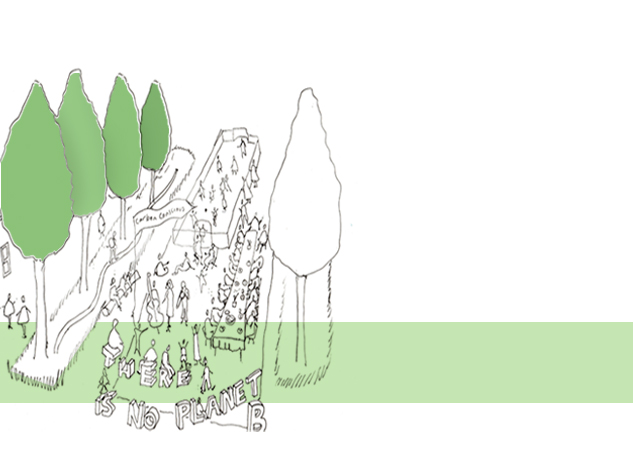Carbon conscious places are people places

As part of the roll out of our new Corporate Strategy we are publishing a series of blogs to expand on the main themes. In this blog Jim MacDonald, Architecture and Design Scotland's Chief Executive, reflects on the urgency of making change the easiest alternative in the face of the climate emergency.
In November, leaders from around the world will gather in Glasgow for the COP26 summit.
The summit aims to agree actions we humans need to take collectively to reverse the impact of our production of greenhouse gases. It is the latest in a long line of world climate summits and treaties dating back decades, each of which has been celebrated as a breakthrough at some level.
Unfortunately, none of this has served to reduce global emissions, or even to slow their growth by very much. Which begs the question, why are we determinedly heading for catastrophe rather than away from it?
George Monbiot observed recently that there is little if any connection between knowing that change is needed to save us and making the changes that will save us, for the simple reason that it always seems too hard to do. So, making change easier seems like a good place to start.
Carbon Conscious Places
Making change easy, or at least easier than the alternatives, is something Architecture and Design Scotland is well versed in, whether through our support for projects or in sharing lessons learned from these. In 2020, we published a report on Carbon Conscious Places which captured the learning from four very different places’ efforts to reduce their impact as part of their long-term planning.
One of the more striking things to emerge from this work was the alignment between measures which decarbonise these places and the co-benefits for people.
For example, places of small distances reduce the need to drive and enable active travel and places that consider whole-life costs make best use of scarce financial resources saving us all money now and in the future. And by putting the people that live in and use a place at the heart of designing their future, it makes it much more likely that the changes will work for the place and the people in it.
Climate Action Towns
Building on this, in 2021 we began work through a data driven approach to identify six places to establish a network of Climate Action Towns, which will put people at the heart of adaptation planning.
The outcomes will be determined by those communities and stakeholders, but they could include identifying a need for micro-generation, retro-fitting of town centre buildings and the alteration of town centres for active travel, pedestrian movement, green space and social settings, to enhance town centres’ resilience against climate change.
So as the world’s attention turns to Glasgow in the autumn, it is timely that we will be able to share some simple, practical solutions to the challenges we all face in tackling climate change.
